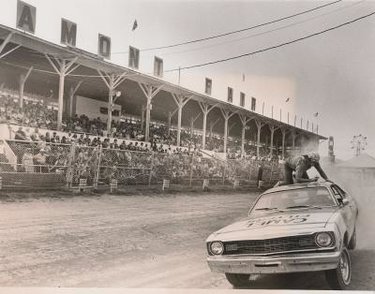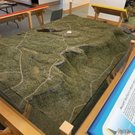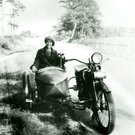Remembering the hijinx and high times at the Altamont Fair of my youth
To the Editor:
In 1893, four businessmen in Altamont organized the first Albany County Fair, inviting farmers and everyone in the surrounding townships to bring their prized livestock, agricultural products, and creations to be displayed and judged.
What changes took place between that first recorded Altamont Fair and my first recollection of attending, I can’t say, but I can comment on my experiences as a young lad growing up in Altamont, attending the fair and what I missed when I last attended in my late 70s.
At the age of 2 or 3, I no doubt attended the Altamont Fair in the company of my parents and was introduced to the farm animals and rode on the carousel. It was when I was about 9 or 10 that I recall making daily visits to the fair alone, or with a friend or two.
Together we would visit the livestock area where we knew many farm kids, who brought their animals to the fair to be judged with hopes of winning a blue ribbon.
We discovered a hole in the fence surrounding the fair that some older boys had made behind one of the exhibit buildings.
Once inside the fairgrounds, the first thing everyone encountered was the music. Bill Bull, a local Altamont resident, provided the public-address system, broadcasting predominantly Souza march songs over speakers mounted on poles throughout the entire exhibit area.
The music was an emotional and enjoyable part of the ambiance that should never have been discontinued. I can’t think of any theme park that does not have music playing to set the pace for the attendees to move from one attraction or venue to another.
It has always been my understanding that one of Altamont’s citizens complained that the music was disturbing them, forcing the fair’s board of directors to eliminate the music. The Altamont Fair was never the same after the music died.
Several permanent buildings, used as meeting points, stand out among the numerous temporary rides, tents, and vendor carts. Perhaps the most prominent landmark is the one-half-mile race track that featured horse racing, midget race cars, and demolition derbies dazzling crowds in days gone by.
Monday night was always The Joey Chitwood Auto Thrill Show. Cars were driven at a high speed up one ramp, landing on another ramp several feet apart.
Before 1952 or ’53, the daily and evening entertainment was the rodeo with calf-roping and bull riding. Sometime after 1953, the rodeo was replaced with a circus, advertised as “Martin’s Super Circus at the Altamont Fair.”
Joey Chitwood, the rodeo, and the circus were all performed in front of the 300-foot grandstand that unfortunately was destroyed in a fire in 1995.
The carnival midway rides and games of chance each with a “barker” standing in front assuring a prize every time was always a magical draw to every boy and girl. One afternoon, two friends and I decided to use some of our limited funds to take a ride on the Fearris wheel.
We each bought our ticket and waited in line to take our seat at the bottom of the giant wheel. The wheel stopped, two riders got off, and the three of us took a seat in the swinging seat while the ride attendant latched the safety bar across us.
We began to move backward one seat at a time as riders got off and new riders took their place. We continued to climb one seat at a time to the very top of the wheel. It was at this point that one of my friends sitting next to me began to shake, grabbed the safety bar and cried out that he was afraid of heights.
My other friend and I tried to assure our acrophobic friend that the ride was safe. Just sit back and it will be over after a few turns of the wheel. All seats were now full of new riders and the wheel began turning non-stop.
We went down and proceeded to ascend back up. We were unable to stop our fearful friend as he slipped under the safety bar and stood on the edge of the seat foot rest. The wheel continued to descend and, as we approached a height of approximately 10 to 15 feet above a tent located adjacent to the Farris wheel, our friend jumped onto the roof of the tent, slid off onto the ground, and ran away, apparently unharmed.
I turned to my friend still sitting in the seat next to me, both of us dumbfounded and speechless. We remained on the ride in our seat until it was our turn to exit. We immediately headed in the direction we saw our friend running once he landed on the ground.
Just outside the midway area, we finally spotted him. Although he appeared to be unharmed, we let him know how frightened we were and what a crazy stunt he pulled.
The next two days we maintained our normal routine, snuck into the fairgrounds before 10 a.m. and spent the day visiting almost every free venue and exhibit from one end of the grounds to the other and back again.
The Altamont Fair would open some years at 1 p.m. on Sunday and on other years on Monday morning, always closing late Saturday night with midway tents and carnival rides coming down and being packed up to move on to their next scheduled county fair.
Television and the internet now are the primary source of information, informing everyone in the surrounding tri-county area of fair dates and free entry for school-age children.
Back in the 1950s, when I attended grade school, each April or May a blank envelope would be passed out with instructions to write our name and address on the front. The envelopes were collected and returned to each child in the mail with a pass to the fair for free entry on Tuesday or Friday together with a discount coupon good for the purchase of carnival rides.
Needless to say, Tuesdays and Fridays also brought parents to the fair, tying up traffic for over a mile on Route 146, the main highway from both Albany and Schenectady. Crowds of people were spread throughout the numerous farm and art and craft exhibits as well as food and marketing vendors creating a logjam of human traffic to navigate as you moved from place to place.
Perhaps the largest concentration of people was along the midway as people waited their turn to engage in a game of skill or chance mixed in with long lines at each of the carnival rides.
Friday, just after noon, I found myself together with my two friends, including my acrophobic friend. We were at the far end of the midway, near the grandstand, headed for the main gate to go home for lunch.
Making our way through the crowd, as we approached the midway, we saw a line of maybe 15 to 20 carnival tents, one placed adjacent to the next and all standing with their back side against the chain-link fence that surrounded the racetrack.
Now this is where things began to go bad. As the three of us approached the first tent on our journey to the main gate, a space of approximately three feet was clearly visible between the back of the tents and the fence.
Someone in our group (you guessed it, the Ferris-wheel jumper) suggested we could save time traveling behind the midway tents and avoid the congestion in our path. Except for a rope or two tied to a tent anchor stake, the path was clear down the three-foot space we had selected to travel.
Off we went, hurdling the first set of ropes, the “jumper” leading the way. On we went, past the first, second, and third tent when either our scent or the noise we made brought one or two small but very vicious dogs, emerging from under the back tent flaps, snapping at our pant legs.
I was in the rear of the group and had only passed by one set of ropes and one of my friends was not that far in front of me, but the “jumper” had made his way down the line of four or five tents.
I feel that each of the dogs were tethered and doing nothing more than performing their responsibility for protecting the contents of their owner’s tent.
When the dogs came out, my friend in front of me and I made our way out from behind the tents before any of the dogs caught us. Our “jumper” friend, however, was not as lucky.
Making his way back over each set of ropes gave one or more of the dogs an opportunity to inflect several bites to his legs and buttocks. Once we were all out of harm’s way, we stood aside in a safe spot, as the “jumper” was crying with visible blood running down his legs.
We all agreed that he needed to see a doctor as soon as possible. We also recognized that we were technically trespassing and would have to answer a lot of questions should we go to the fair’s medical emergency facility.
We decided on Plan B. I knew that one of the village doctors took patients in his home on weekdays. We were on our way again, somehow making our way through the crowd out the Grand Street gate, down Main Street, and over Euclid Avenue to the doctor’s residence-office.
Once there, a nurse or receptionist took some information and escorted all of us into the doctor’s office. As we all began to tell the story, explaining why we were there, it was apparent the doctor was holding back a grin on his face, but when he saw blood on our friend’s leg, his demeanor changed. He became more serious and asked us to wait in the outer room.
After waiting some time, both the doctor and our friend came out of the office. The doctor told us to be more careful and stay out of trouble. He also spoke to the receptionist, instructing her not to bill the visit. We thanked the doctor and left.
Over the many years that I lived and grew up in Altamont and attended the Altamont Fair, I recall several incidents that would make a good story but I’ll save them for another time. The Altamont Fair and all county and state fairs have an opportunity and perhaps a responsibility to introduce the attendees to livestock many of them have only seen from a distance, individual and club projects, crafts, flowers and home-goods, displayed proudly for all to see.
I just like going to the fair. But bring back the music.
John A. Meineker
Wildwood, Florida
Editor’s note: John A. Meineker and his wife, Lorraine, have published a book, “Memories & Menus,” which features his stories, like this one about the Altamont Fair, and her recipes. Readers can buy a signed copy of the book from him for $12 to cover the cost of the book and postage; email request to: meinekerj@gmail.com


